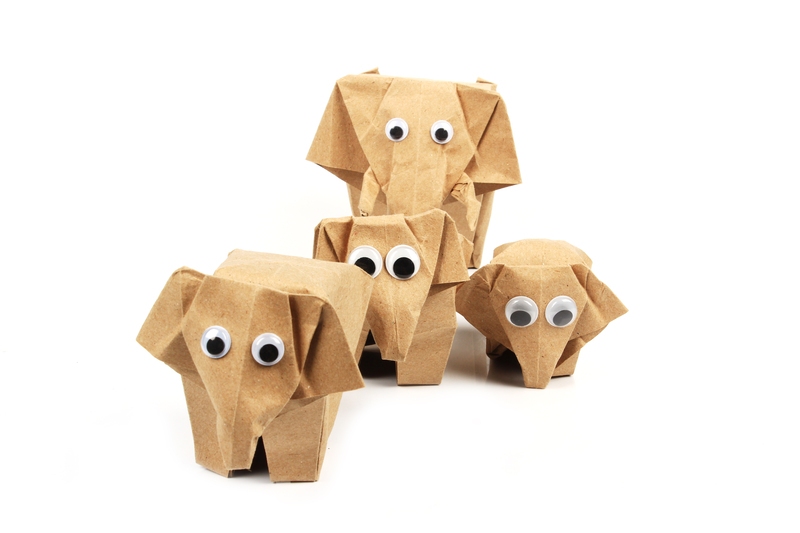Tips for Safely Disposing of PPE After Use
In today's world, the use of personal protective equipment (PPE) has become essential across various sectors, from healthcare and industrial settings to everyday life. Properly disposing of used PPE is crucial to prevent environmental contamination, protect human health, and mitigate the spread of infectious diseases. This comprehensive guide will provide you with essential tips and best practices for the safe disposal of PPE after use, ensuring both personal and environmental safety.

Understanding PPE and Its Importance
Personal Protective Equipment (PPE) refers to clothing and gear designed to shield individuals from hazards and contaminants. Examples include masks, gloves, face shields, gowns, and shoe covers. During health emergencies like the COVID-19 pandemic, the widespread use of PPE has played a major role in infection control. However, the spike in PPE usage has also led to a surge in PPE waste, highlighting the importance of safe and responsible PPE waste disposal.
Why Safe Disposal of PPE Matters
- Prevents the spread of disease: Used PPE can carry harmful pathogens that can infect others if not handled properly.
- Protects sanitation workers: Correctly disposing of PPE protects waste handlers from inadvertent exposure to infectious wastes.
- Reduces environmental impact: Improper disposal of masks, gloves, and other PPE can contribute to plastic pollution and harm wildlife.
- Maintains community hygiene: Safe disposal practices help keep public spaces cleaner and safer for everyone.
Types of PPE and Their Disposal Needs
Different PPE items have unique disposal requirements, depending on their material and previous exposure:
- Face masks (surgical, disposable, cloth)
- Gloves (latex, nitrile, vinyl)
- Face shields and goggles
- Gowns and coveralls
- Shoe covers
Let's explore effective techniques for disposing each PPE variety safely to minimize risk to individuals and the environment.
General Guidelines for PPE Disposal
Adhering to the following general guidelines is crucial for safe disposal of personal protective equipment:
- Do not reuse single-use PPE: Dispose of any single-use items immediately after use to avoid contamination.
- Hand hygiene is key: Always wash or sanitize your hands immediately after removing and discarding PPE.
- Use a lined, dedicated waste bin: Place used PPE in a lined trash container to contain contaminants and prevent leaks.
- Keep PPE waste separate: Where possible, use a separate bin labeled for PPE waste to facilitate safe handling and disposal.
Step-by-Step PPE Disposal Guide
1. Removing PPE Safely
- Remove PPE carefully--avoid touching the outside surfaces that may be contaminated.
- Follow the correct order: Remove gloves first, then goggles or face shield, gown/coveralls, and finally your mask.
- Dispose of each item immediately after removal--do not place used PPE on surfaces or reuse items intended for single use.
2. Disposing Masks and Respirators
- Grasp the ear loops or ties without touching the front of the mask.
- Place the mask directly into a lined trash bin or dedicated PPE disposal container.
- Never drop used masks on the ground or in public space containers.
3. Safe Disposal of Gloves
- Pinch the outside of one glove at the wrist without touching your skin and peel it off inside-out.
- Hold the removed glove in your gloved hand. Slide your ungloved finger under the wrist of the remaining glove and peel it off over the first glove.
- Dispose both gloves promptly in the provided waste bin.
4. Gowns, Coveralls, and Shoe Covers
- Remove gowns by untying or breaking fasteners and pulling away from the shoulders, turning it inside out as you remove it.
- Handle shoe covers from behind or the base--avoid touching the outer surfaces.
- Place all in a lined trash can immediately after use.
5. Face Shields and Goggles
- If intended for single-use, dispose in the PPE container.
- If reusable, carefully clean and disinfect as per manufacturer instructions.
6. Final Hygiene Measures
- Always perform thorough hand washing with soap and water or use an alcohol-based hand sanitizer after disposing of PPE.
- Never touch your face during or after PPE removal until your hands are clean.
Best Practices for PPE Waste Management at Home
- Keep a dedicated PPE trash bag at home: Especially if a household member is ill or has been exposed to infectious agents.
- Double-bag PPE waste: Consider using two bags, particularly when disposing masks and gloves used by infected individuals.
- Seal bags tightly before disposal: Tightly closing the bag helps prevent leaks, odors, and accidental exposure.
- Label PPE waste bags if necessary (e.g., "used PPE - do not open") for the safety of family members and waste collectors.
- Place sealed PPE waste in your household trash: Do not recycle used PPE as it may contaminate recycling streams and pose risk to workers.
How to Safely Dispose of PPE in Public Spaces
- Look for designated PPE disposal bins--many public buildings, hospitals, and transport hubs provide these during health crises.
- If bins are unavailable, use a lined trash receptacle--never discard PPE on the ground or in recycling bins.
- Always sanitize your hands after touching public surfaces or disposing of used equipment.
Workplace and Healthcare Settings: PPE Disposal Protocols
Organizations should implement strict protocols for PPE waste management, including:
- Training employees and staff on proper PPE removal and disposal procedures.
- Using color-coded and clearly labeled bins dedicated for contaminated PPE waste.
- Working with licensed hazardous waste management services when disposing of potentially infectious material.
- Monitoring and maintaining adequate supply of PPE disposal materials such as lined bins and secure bags.
PPE Disposal and the Environment: What You Need to Know
PPE items such as masks, gloves, and gowns are often made from non-biodegradable plastic materials. Improper disposal can cause serious environmental issues:
- Clogging of water bodies and sewage systems due to littered PPE waste.
- Threat to wildlife--animals may ingest or get entangled in improperly discarded PPE.
- Long-term pollution--most PPE does not break down easily and can persist in landfills for years.
Eco-Friendly PPE Disposal Options (Where Possible)
- Participate in specialized recycling programs: Some communities and organizations run programs to recycle used PPE (such as TerraCycle PPE recycling boxes).
- Support sustainable PPE products: Choose biodegradable or reusable PPE when feasible.
- Encourage regulatory action: Advocate for government-led PPE waste collection and processing initiatives.
Common Mistakes in PPE Disposal and How to Avoid Them
- Throwing PPE in recycling bins: PPE is not recyclable in standard municipal recycling systems; always use general waste bins.
- Littering: Never leave used PPE on streets, parks, or public transportation.
- Reusing single-use PPE: These should be discarded after each use.
- Improper bagging: Never toss used PPE loosely into trash; always use tied or sealed bags.
Legal and Regulatory Aspects of PPE Disposal
Proper disposal of personal protective equipment is not just a personal responsibility--it may also be governed by local, national, or workplace regulations, especially for healthcare, laboratories, or facilities handling hazardous materials.
- Research local guidelines: Some regions require PPE waste to be disposed of as infectious or hazardous material.
- Comply with workplace safety requirements: Employers must provide designated bins and educate staff.
- Follow regulations for special PPE: Such as those contaminated with blood, chemicals, or pharmaceutical agents, which might need specialized handling.
Innovations in PPE Waste Management
- Advancements in biodegradable PPE: Companies are developing masks and gloves from materials that break down naturally in the environment.
- Industrial-scale PPE recycling: Emerging technologies can sterilize and recycle PPE into new products or materials.
- Public awareness campaigns: Governments and non-profits globally are increasing advocacy around responsible PPE disposal methods.

PPE Disposal Tips for Specific Groups
For Households
- Educate all family members: Ensure everyone understands the importance of correct PPE waste disposal.
- Supervise children: Teach kids to hand their used masks or gloves to adults for proper disposal.
- Safeguard pets: Keep used PPE away from animals, as ingestion or entanglement can cause harm.
For Healthcare Workers
- Adhere to strict protocols: Follow facility guidelines for segregating, bagging, and disposing of PPE.
- Double-check disposal stations: Ensure used PPE is deposited in the correct containers before leaving patient care areas.
- Participate in training: Stay updated with facility waste management and PPE handling policies.
For Business Owners and Facility Managers
- Increase bin availability: Equip entryways, staff areas, and restrooms with clearly labeled PPE waste bins.
- Display signage: Use posters and reminders to encourage proper PPE disposal among employees and visitors.
- Schedule frequent collections: Remove PPE waste regularly to prevent overflow and minimize contamination risk.
Conclusion: Responsible PPE Disposal Is Everyone's Duty
The widespread use of personal protective equipment is a powerful tool in maintaining public health and workplace safety--but its lifecycle should not end with unsafe or careless disposal. By learning the right methods and practicing proper disposal of PPE after use, anyone can minimize health risks, protect essential workers, and reduce environmental harm.
Remember, every action counts. Whether at home, work, or while traveling, following these PPE disposal tips ensures you're doing your part in making the environment and your community cleaner, safer, and healthier.
Key Takeaways for Safe PPE Disposal:
- Always discard used PPE in a lined waste bin, never in recycling or public spaces.
- Seal and tie off bags containing PPE waste securely before disposal.
- Practice hand hygiene after every PPE removal and disposal.
- Stay informed and educate others on safe disposal practices and available programs for PPE recycling or recovery.
Together, we can protect ourselves, our communities, and the planet--one piece of PPE at a time.